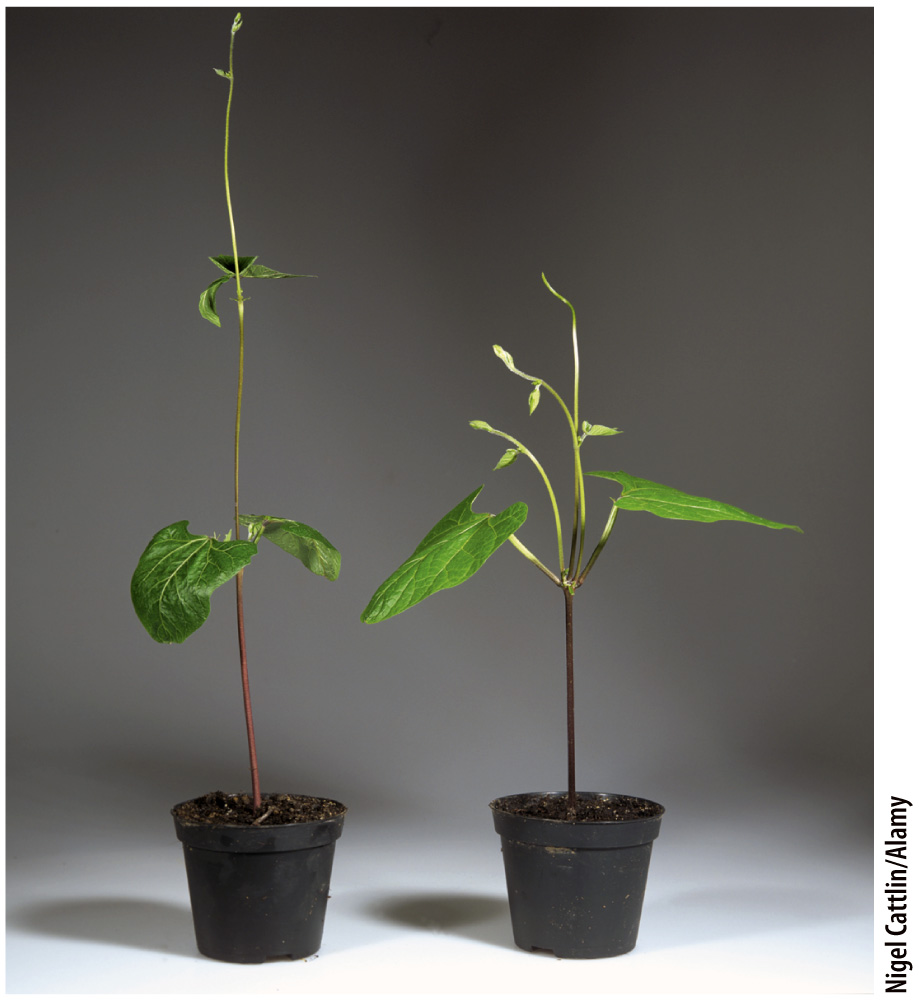Cytokinins, in combination with other hormones, control the outgrowth of axillary buds.
Branching allows plants to support more leaves, but branches that are too close together result in leaves that overlap and shade one another. Because of the formation of axillary buds, seed plants have the potential to produce a new branch at each point where a leaf was attached. To avoid overlap, only a few axillary buds actually develop into branches. Which become branches is determined by the interaction of several hormones, including both cytokinins and auxin.
Cytokinins are plant hormones that were discovered when they were seen to stimulate cell division in tissues grown in the laboratory. Not surprisingly, cytokinins are produced in plant meristems. Although cytokinins affect a variety of physiological and developmental processes, they promote shoot growth by increasing the number of dividing cells in the apical meristem and, when applied directly to axillary buds, can stimulate them to develop into branches. This suggests that cytokinins play a role in branching in nature, but leaves open the question of what determines whether an axillary bud remains dormant or begins to grow.
Removing the shoot tip stimulates the outgrowth of axillary buds along that branch or stem (Fig. 31.10), suggesting that the shoot apical meristem somehow suppresses the growth of axillary buds. This suppression is referred to as apical dominance. Apical dominance prevents branches from being formed too close to the shoot tip, yet new branches can still be formed if the shoot meristem is damaged.

Apical dominance results because chemical signals from the shoot tip control the growth of axillary buds. One of these chemical signals is auxin, which moves by polar transport (and also in the phloem) from the shoot tip toward the root. Auxin’s role in suppressing branching can be demonstrated: If the shoot tip is cut off and a paste containing auxin is applied to the cut end of the stem, the axillary buds remain dormant. If instead the shoot tip is treated with a substance that inhibits auxin transport, branching is induced.
Auxin suppresses the growth of axillary buds by inhibiting the synthesis of cytokinins, the hormones that stimulate the outgrowth of axillary buds (Table 31.1). When the apical meristem is removed, cytokinin synthesis increases in the stem nodes, triggering the growth of axillary buds.
Recent studies indicate that this top-